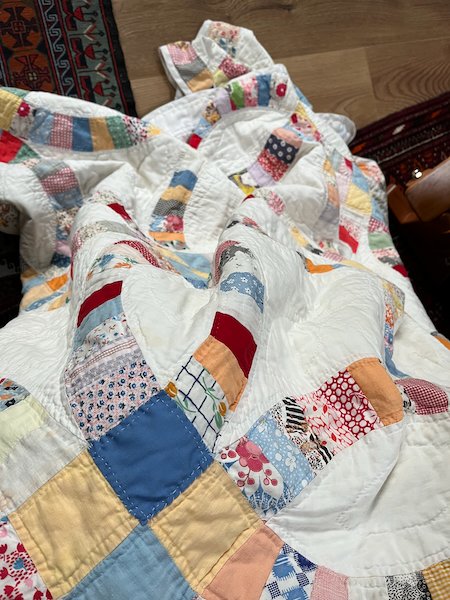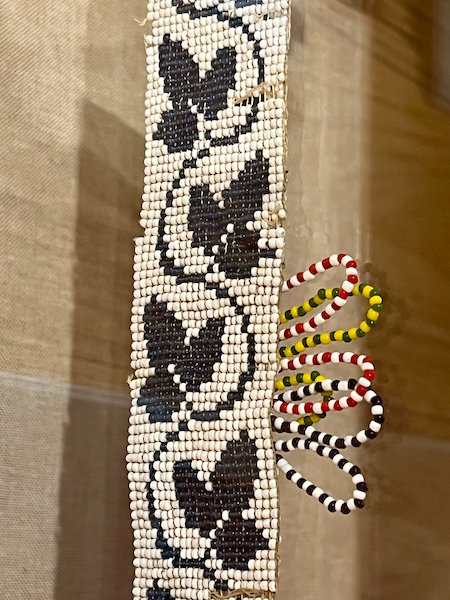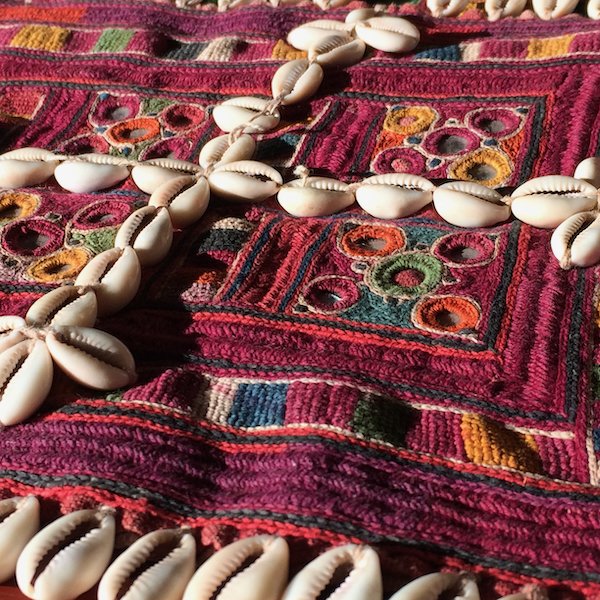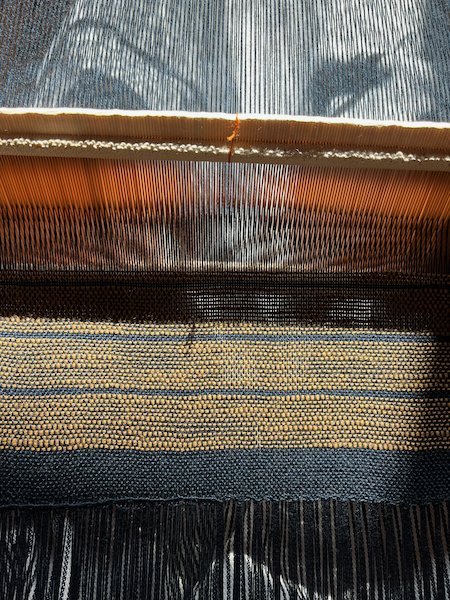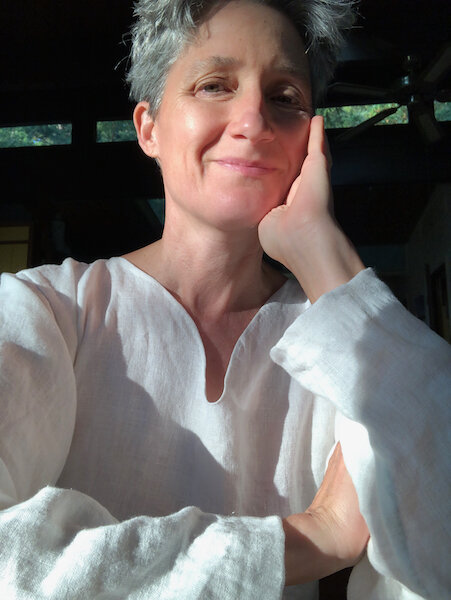Quilt made by Florence Mallory of Prescott, Kansas, circa 1960
It occurred to me as I sat wrapped in my great grandma’s hand-stitched Double Wedding Ring quilt, and again as I contemplated an intricate tribal embroidery from Gujarat - these hand crafted things are expressions of faith.
Sleeve fragment of an embroidered blouse, purchased in Kutch, Gujarat, India, in 1994
Not necessarily a particular religion’s faith, although handcraft is often aligned with prayer and a sense of service to the divine. What I feel from these textiles is faith in the craft itself - the belief that it matters that we do this, that something is made with a person’s full attention of skill and years of practice.
Lakota tent lining, hide and beads, Plains Indians Museum in Cody, Wyoming
The way people carry on making beautiful things in difficult circumstances shows me this faith, and also hope. It was almost an overwhelming feeling, seeing multiple collections of Plains Indians textiles in recent days. The care, attention, skill, and faith in oneself and one’s community traditions held in these objects, large and small, is breathtaking.
Beaded band, Indian Museum of North America, Crazy Horse Memorial
Horsehair bridle, Indian Museum of North America, Crazy Horse Memorial
Sewing/beading kit, with work in progress, strands of beads, and sinew thread, Plains Indians Museum in Cody, Wyoming
Even when exiled onto a reservation and given ration cards to receive food from the US government, people made beautifully decorated bags to carry the little piece of paper.
Beaded bag and ration card, Plains Indians Museum in Cody, Wyoming
This devotion to craft tells me it doesn’t matter who gets it (since so many people nowadays don’t), —that there is value in the doing, in the joining of heart and hands and materials, even if you’re all by yourself. That in making a thing, something is given and received, offered with love, in contrast to the hurry and press and hard bargaining that surrounds us.
Embroidery of nomadic Banjara people, purchased in India in 1994
The faith spoken by these exquisite offerings sustains me, and encourages me to keep offering my own stitched and woven and handspun affirmations.

